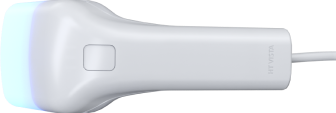- Introducing HT Vista's New Diagnostic Capability
Non-Invasive Cancer Detection for Lumps & Bumps Emerges as a New Category of Care for Practitioners HT Vista, the pioneer in non-invasive cancer screening for dogs, is set to unveil a groundbreaking enhancement to its device. This latest version not only allows veterinarians to 'rule out' cancer without the need for invasive procedures but now also 'rules in' malignancy with over 90% specificity. This advancement is poised to transform veterinary diagnostics, offering a more streamlined, cost-effective, and precise approach to cancer detection. HT-Vista’s Cancer Risk Results scale and Mast Cell Tumor identification capability Scan report showing a high cancer risk Key Highlights: ● Unique Offering: HT Vista remains the only tool in the veterinary industry providing non-invasive cancer screening for dermal and subcutaneous masses. ● Enhanced Precision: The new diagnostic capability reduces reliance on costly and invasive techniques like aspiration or biopsy. ● Emotional Impact: This tool alleviates stress for both veterinarians and pet owners, aligning with the needs of clients and providing peace of mind. Upcoming Launch: The official launch will take place at the Western Veterinary Conference (WVC) on March 2, 2025, where HT Vista will demonstrate this transformational capability. A follow-up webinar with Clinician’s Brief is scheduled for March 20, 2025, to delve deeper into its features and benefits. Dr Liron Levy-Hirsch MD DVM MRCVS: "We are incredibly excited to enhance our already powerful HT Vista screening tool with a new diagnostic capability, providing veterinary teams with an even more comprehensive decision-support system. Our screening technology has already been a game-changer in early detection, and now, with the ability to flag specific tumor types, we are taking another significant step forward. This advancement empowers veterinary professionals to make even more informed decisions, supports shared decision-making with pet owners, and ultimately improves patient outcomes. By reducing the time from suspicion to diagnosis and treatment, we can detect cancer earlier, avoid the ‘wait and see’ approach, and help save more lives." Mrs Shani Toledano, CEO and Co-Founder: “The latest HT Vista upgrade transforms cancer detection in veterinary medicine. With enhanced diagnostic capabilities and 90%+ specificity, we empower vets to detect malignancies earlier—without invasive procedures. This breakthrough sets a new standard in veterinary diagnostics, saving more lives with greater confidence.” As the veterinary industry continues to evolve, innovations like HT Vista's are crucial in improving patient outcomes and enhancing the quality of care. This tool represents a significant step forward in non-invasive diagnostics and a new category of care for the practitioner. Learn more at ht-vet.com.
- HT Vista 4.0: From a ‘Rule Out’ Screening Tool to Also a “Rule In” Diagnostic Modality
Background and Clinical Need HT Vista is a non-invasive cancer detection tool originally developed as a screening tool to help veterinary teams quickly assess whether a dermal or subcutaneous mass is likely benign or requires further diagnostic testing 1. Using AI-powered heat diffusion analysis, HT Vista detects features of malignancy in thermal patterns in tissue. Efficiently diagnosing lumps and bumps in dogs is crucial for successful treatment. The standard method of cytology is effective but can be costly, invasive, and inconclusive. As a result, many pet owners choose to "wait and see," leaving masses undiagnosed and dogs to go home with cancer. From a ‘Rule Out’ Screening Tool To Also a “Rule In” Diagnostic Modality HT Vet is happy to introduce its updated version 4.0 with major improvements to its cancer detection modality. Advancements in AI and HT Vista’s expanding dataset have paved the way for two exciting new features: Cancer Risk Values and Levels: These offer a visual framework to help veterinary teams assess lumps and bumps on the spot, aiding in decision-making by accurately identifying low-risk cases that can be confidently monitored, while guiding next steps for moderate- and high-risk cases. AI-powered Tumor Subclassifiers: Flag Lipomas and Mast Cell Tumors (MCTs) - in cases where HT Vista detects very low or very high malignant probability - minimizing unnecessary invasive procedures for Lipomas and enabling early detection of MCTs. This article explains the technical details of the new features and highlights the performance of the Lipoma and MCT subclassifiers. Review: Training Dataset Composition The primary classifier was trained on a dataset of 1,163 canine masses, with tumor types distributed as in table 1. Table 1. Distribution of Dataset Across Tumor Types Validation Methods and Study Design After training the classifier, a validation study was performed, utilizing a three-step framework for classifying dermal and subcutaneous masses in dogs: Step 1: Primary Classification - creating a Model Score For each validated scan, the model outputs a discrete predictive Model Score ranging from 0 to 1. Image 1 shows a spectrum of Model Score results of all 1,163 scans. The Diagnostic “Ground Truth” - from cytology and / or histopathology - is then charted for each. Image 1 shows the distribution of results (benign vs. malignant) across Model Scores, from which HT Vista's overall Sensitivity and Specificity is derived.
- Take Back Lunch Time Infographic
Cooper has an appointment with Dr. Green for a suspicious lump on his leg. Can Dr. Green get a confident diagnosis, decide on next steps with Cooper's owner, AND still have time for lunch? Download our infographic how the old way of evaluating Cooper's mass compares to time-saving, non-invasive screening.
- HT Vet announces distribution partnership with Patterson Vet
HT Vet is thrilled to announce a new partnership with Patterson Veterinary Supply, aimed at bringing its innovative canine cancer screening device for dermal and subcutaneous masses to veterinary practices across the United States. This collaboration highlights HT Vet's dedication to equipping veterinary professionals with non-invasive, efficient, and reliable tools for cancer screening, ultimately enhancing the quality of care and peace of mind provided to pet owners.
- Dermal Cancer Screening Form for Pet Owners
Download your free copy of our dermal cancer screening intake form for pet owners. Provide this form to clients during every wellness visit to identify potential cancer concerns, and help them take a proactive approach to cancer screening.
- HT Vista in DVM360: Non-Invasive Cancer Screening for Lumps & Bumps
Early detection is vital for the best outcomes in pets. Yet, more than half of dermal and subcutaneous masses in dogs go undiagnosed (1) mainly due to the cost and invasiveness of traditional tests. HT Vista, a non-invasive cancer screening tool, allows for the timely screening of dermal and subcutaneous masses, promoting early diagnosis and helping veterinarians make faster, informed decisions for early intervention. As pet parents seek less invasive options, HT Vista offers an effective, non-invasive and affordable solution. How Does HT Vista Work? HT Vista’s technology is based on heat diffusion imaging. The tool heats the tissue by 42°F and detects how heat is distributed and diffused over 40 seconds. Abnormal growths often have distinct heat diffusion patterns compared to benign ones, allowing HT Vista to flag masses that may require further investigation. What Is a Screening Tool? In veterinary medicine, screening tools identify disease states before the patient demonstrates overt clinical signs. These tools are invaluable when screening for cancer, as early detection gives patients the best chance of effective therapy options and more time with their humans. HT Vista fits squarely within this category. Its ability to screen masses in their early stages allows veterinarians to intervene at the most opportune moments. As a screening tool, HT Vista is a front-line tool designed not necessarily to replace aspiration or biopsy, but to complement them. How Is HT Vista Used In Practice? The process is simple: HT Vista is placed over and heats the mass, and its thermal diffusion patterns are analyzed. A Heat Diffusion Score between 1 and 10 is delivered in real-time and visualized in an intuitive, easy-to-understand interface. Each Heat Diffusion Score represents the probability of the mass showing benign features. An HT Vista score between 5 and 10 has an average negative predictive value (NPV) of 98%, suggesting with confidence that the mass is likely benign. A score between 1 and 4 indicates a higher risk of cancer and that further diagnostics may be necessary. Meanwhile, suppose a pet parent chooses to remove the mass regardless of the score or finds additional diagnostics too expensive. In that case, the veterinarian can explain that a high score allows for a more straightforward, less extensive procedure. In contrast, scores from 1 to 4 require tissue removal with wider and deeper margins. Dermal and subcutaneous growths can originate from various tumor types (7), but HT Vista’s algorithms have been trained and are, therefore, particularly accurate when focusing on the most common. These tumor types and respective accuracies include:
- A Technical Overview: Developing a Fur Mask for Tumor Analysis
HT Vista by HT VET is an innovative screening tool designed to help veterinary teams differentiate between benign tumors and those requiring further investigation by analyzing their heat diffusion properties. The tool can assess both dermal and subcutaneous masses by gently heating the tumor and monitoring its heat diffusion with thermal and optical sensors. This process captures critical data that can aid in making informed diagnostic decisions.
- How Veterinarians Can Effectively Diagnose Dermal and Subcutaneous Tumors in Dogs
As a veterinarian practice owner, understanding the complexities of diagnosing dermal and subcutaneous tumors in dogs is essential for providing top-tier care. These types of tumors account for a significant portion of canine cancers, making up about one-third of all cases. Effective diagnosis and management of these tumors are crucial for improving outcomes and ensuring the well-being of your patients.
- HT Vet announces distribution partnership with Victor Medical Company
HT Vista has partnered with Victor Medical Company to expand the uptake of their innovative canine lump and bump screening device across the west of the USA. This partnership shows a continued dedication from HT Vista to bring non-invasive, quick and effective screening of dermal and subcutaneous masses into the hands of clinicians.
- 'Can a Heat Scan Rule Out Cancer?'
Our Response to an Analysis That Missed the Mark In his recent article, after receiving increasing inquiries from fellow veterinarians, pathologist Dr. Eric Fish posed the question, "Can a Heat Scan Rule Out Cancer?" We're honored to have caught the attention of so many veterinarians, but we respectfully disagree with Dr. Fish's analysis.
Start using
HT Vista today.

Start using HT Vista today.


support@htbioimaging.com